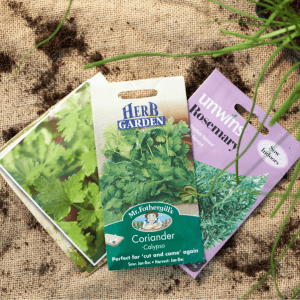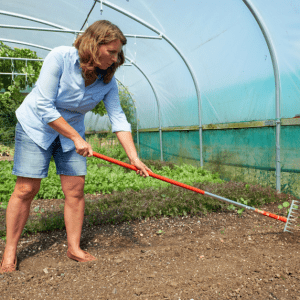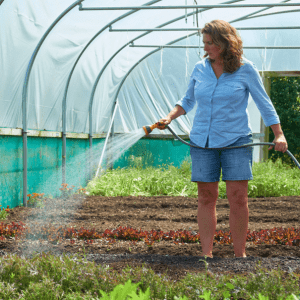Welcome to my first blog for Let’s Grow. Over the coming months we’ll look at how to grow some simple herbs to complement your meals but today I’m going to concentrate on getting started.
You can honestly grow anywhere! If you’re lucky enough to have outside grass space or raised beds, recycled containers can be positioned there. If you have no grassy space and have tarmac or concrete instead you can set up containers, grow bags and large pots too.
Basically, if you have something that will hold soil, you can grow food.
The best advice for any budding garden scheme is to start small and build on what you have over time. If you have success with a small amount of growing space it gives everyone the confidence to push on and do more.

Come up with a plan
Look at the space that you have available and plan what you want to grow. Things which you might want to consider given the space are:
- Raised beds or containers for your veg plot
- An area for permanent herbs
- A polytunnel or greenhouse
- Compost bins
Containers
These can be bought or made out of recycled materials. They must have some holes in the bottom for drainage but if they don’t, you can drill some.
The larger the container the better; very small pots or containers need too much attention in terms of watering and feeding and your plants may not do so well.
What tools do you need?
The great thing about gardening is that you do not need a lot of complicated tools or equipment, and anything you do need is usually inexpensive. In fact the best tools that you have are your hands!
- Hand forks and trowels: you will probably use these more than anything else for weeding, harvesting and planting out crops
- Selection of pots and trays – recycle and reuse where possible – washed yoghurt pots and food containers are good so long as you put some drainage holes in the bottom.
- Gloves – to keep hands and nails clean.
- Plastic trugs – which are incredibly useful to put crops in, weeds, compost and more.
- Plant labels and a waterproof marker – or you can make your own labels.
- Watering can or hose for watering in dry weather.
Looking to take you projects to the next level? You might want to consider some of the following:
- Rake: to level off raised beds and spread compost or manure in the autumn.
- Hoe: move a hoe gently backwards and forwards under the soil in warm weather to cut emerging weeds of at the root.
- Large digging fork: to remove stubborn weeds and break up new ground
- Spade: to break up clumps in heavy ground.
- Sécateurs: for cutting hardy herbs and scissors for harvesting salad leaves
- Wheelbarrow: for compostable material, moving soil or compost and gathering leaves in the autumn to make leaf mould.
Soils and composts
Good topsoil mixed with multi-purpose or potting compost is best, and a little horticultural grit for hardy herbs – add a top dressing of compost in autumn and spring and a scattering of pelleted chicken manure.

Position (in relation to the sun)
If you are lucky enough to have a space facing south, south east or south west you will be able to grow almost anything.
Don’t be disheartened though if the only space you have faces north or is shaded by tall buildings, as lots of crops do quite nicely in shade. It would be better if the space gets some sunlight at some stage during the day, but there are lots of possibilities if that is not the case.
Plants for shady areas
mint, parsley, chives, salad leaves, root crops like potatoes, beetroot and carrots, radishes, rhubarb, bay tree.
Plants which prefer full sun
Mediterranean herbs such as thyme and rosemary, and fruit so that it ripens properly.
Inside on your window sills
basil, pea-shoots, micro cress, parsley, coriander – use beautiful painted pots, or recycled ones, and remember that all containers must have drainage holes

